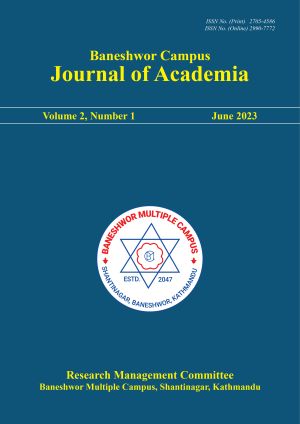Practice of Caste Hierarchy in Nepali Muslim Society
DOI:
https://doi.org/10.3126/bcja.v2i1.55759Keywords:
Hindus, Conversion, Saiyed, Untouchables, prejudice, hierarchyAbstract
A nation like Nepal, where Hindus make up the bulk of the population, places a greater emphasis on the study of religious minorities. Caste is a distinctive type of stratification. It is purely a Hindu phenomenon that is comprehensible and explicable in terms of Hindu principles and justifications. In addition to the Indian subcontinent, caste is widespread in the Arab world, Polynesia, North and East Africa, Japan, and North America. Like in the Hindu community, there is caste purity and practice of hierarchy in Muslim community. Saiyedism in Muslims society (the Arab domination) like Brahminism in Hindu society is a primary cause of caste prejudice in the Muslim community.
This paper outlines the crucial steps that must be completed at each stage of the caste hierarchy and is based on qualitative research. The subject is being generalized through an observational technique, in-depth interviews, and library research. Muslim scholars and elderly persons who had experienced such practice were picked as the respondents for the purpose of learning more. The respondents are identified as Res.1, Res.2, Res.3, and so forth because they requested anonymity. The Muslim caste hierarchical system in Nepal is the area of this study. It tries to combat the issue of caste hierarchy among Muslim people in Nepal.
Downloads
Downloads
Published
How to Cite
Issue
Section
License
Copyright (c) 2023 RMC Baneshwor Multiple Campus

This work is licensed under a Creative Commons Attribution-NonCommercial 4.0 International License.
CC BY-NC: This license allows reusers to distribute, remix, adapt, and build upon the material in any medium or format for non-commercial purposes only, and only so long as attribution is given to the creator.





